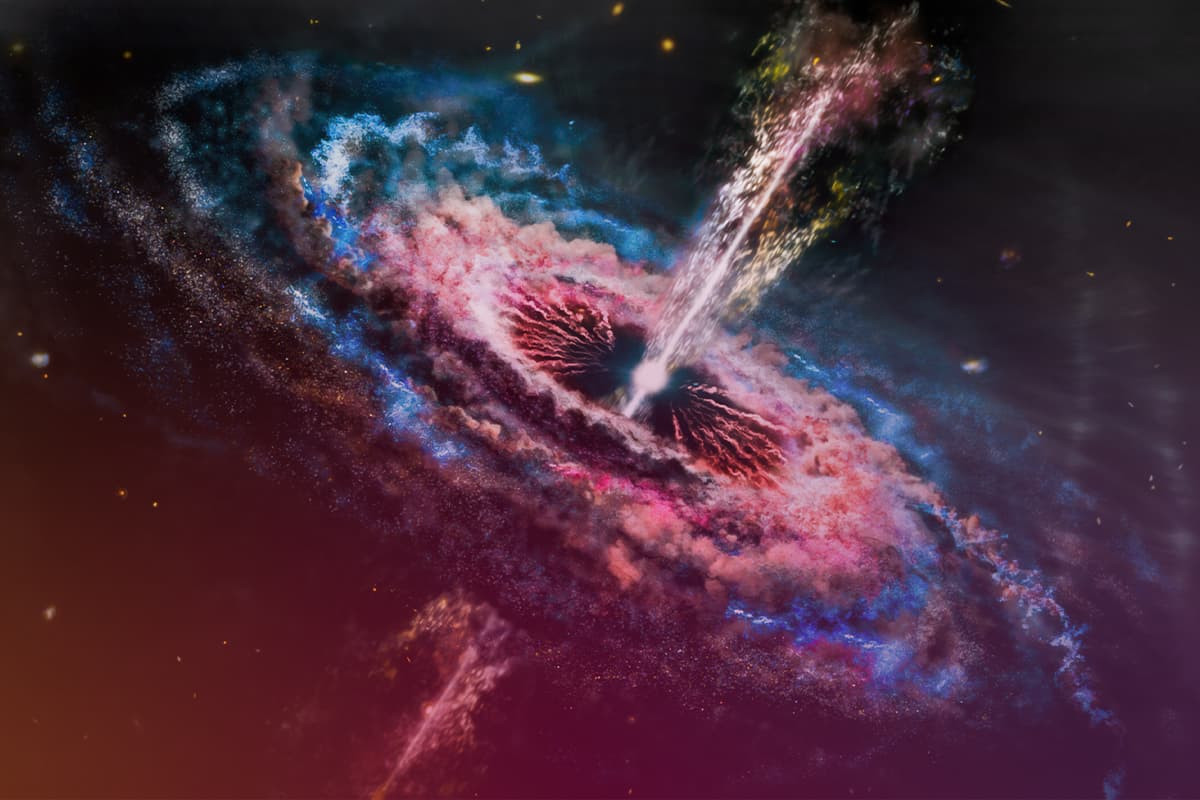
What is in this article?
People are frequently captivated by the universe and find it to be a focal point of their inquiries. Scientists often talk about dark energy and dark matter, which are thought to exist in the universe. In this blog, we take a closer look at the universe and dark energy and matter, the nature of which is not yet clear.
The structure of the universe is formed by the combination of matter, energy and voids. According to NASA, everything we can see makes up less than 5 percent of the total mass and energy of the universe. Much of it is still a mystery. Moreover, the universe is homogeneous on very large scales, and analyzing it on small scales makes it easy to understand the cosmic structure that binds galaxies and star clusters together.
In 1998, studies by two independent groups concluded that the isotropic and homogeneous universe was expanding at an increasing rate. Astronomers have analyzed exploding stars, called supernova, and found that the universe expands faster as it ages. Studies of the energy of the universe and the gravity of galaxies, which led to a change in Albert Einstein's idea of a static universe, showed that the universe was full of energy with negative pressure. So we call it dark energy in reference to an enigmatic form of energy whose fundamental properties remain elusive.
Independent islands in space, like the Milky Way, are called galaxies. The observed higher velocities of objects in motion around galaxies, surpassing the predictions of Newtonian mechanics, indicate the presence of additional matter within galaxies. Despite attempts to measure the mass based on the emitted light from galaxies, no significant amount of extra mass has been detected. Astronomers refer to this extra mass as dark matter. The dark matter is thought to be located somewhere in the center of the galaxy.
If you have questions about frequently discussed concepts in scientific research, such as the nature of dark energy and the existence of dark matter, keep on reading this blog.
What Is Dark Energy? Is It Real?
Research has shown that the area covered by galaxies and star clusters is expanding at an accelerating rate. The most accurate definition of dark energy, which NASA observes makes up about 68% of the universe, is that it is a property of space.
Albert Einstein, who was the first to realize that the void is nothing, opined that there should be more space. According to the theory of gravity, empty space can have its own energy. As the universe expands, the dark energy, which is an inherent property of space itself, does not become diluted or diminished. Through the analysis of the rate of expansion and acceleration of the universe, scientists have discovered that the amount of dark energy appears to increase over time. The reason why the energy that is thought to cause the expansion of space is called dark is that its structure is not yet fully understood.
The quantum theory of matter assumes that space contains transient (virtual) particles that constantly reform and disappear after some time. However, when physicists calculated how much energy this would give to empty space, they found that the answer was wrong. Despite extensive studies and research, the concept of dark energy remained an enigma. Moreover, dark energy was thought to be a kind of dynamic fluid. The Greek philosophers called dark energy, which behaves contrarily to normal energy, essence. However, the inability to determine what the dark energy called essence looks like has meant that the concept, which is located in space and has a high driving force, remains a mystery.
Scientists who tried to explain dark energy by assuming that Einstein's theory of gravity was incorrect found that normal matter in clusters of galaxies was affected by this phenomenon. Moreover, since it would be difficult to analyze how galaxies are composed, and a new theory would be needed to do so, this possibility to describe dark energy was not accepted either. In short, although the existence of dark energy is suspected, its scientific definition is quite difficult, since it is not fully understood what it looks like. Dark energy, which remains a mystery, is a property of space and causes galaxies to move away from each other day over time.

What Is Dark Matter?
Stars at the outer edges of galaxies are expected to rotate more slowly than stars near the center. However, astronomers have found in their space explorations that stars in the outer region rotate at very high speeds. Stars flying away from the galaxy are thought to have a mass of force that keeps them in orbit despite their high rotational speeds. This invisible force mass that keeps stars rotating at high speeds is called dark matter.
The existence of dark matter is widely accepted among astronomers. However, dark matter is very difficult to detect because it does not emit, absorb, or scatter light. Physicists around the world are conducting various researches to detect the dark matter using different technical devices.
Although scientists consider dark matter as part of the standard cosmological model to understand the formation of the universe and how it came to its present state, a definitive and precise analysis of its properties and nature has not been achieved thus far. Dark matter and dark energy appear to be competing forces in the universe but the commonality of the two is that they originated with the Big Bang and retain their mystery.
The Relationship Between the Universe and Dark Energy: How Does the Universe Expand?
According to Newton's theory of gravity, all objects attract each other. However, scientific studies have shown that galaxies with very large distances have a different gravitational force. A form of energy called dark energy, whose structure is unknown, is thought to have an impact on the universe. Dark energy, which causes cosmic acceleration, occupies an important place in cosmological research.
The cosmological constant (the value of the vacuum energy in space) that Albert Einstein added to his equations in 1917 which changed after Edwin Hubble proved the expansion of the universe in 1929 resembles a homogeneous fluid under pressure. This constant was interpreted as dark energy with negative pressure. Thus, this constant, which corresponds to the repulsion of matter by gravity, was found to be much higher than the observed value.
Later interpretation of this scenario, which gave rise to multiple issues in quantum theory, suggested that the presence of dark energy permeated the universe, leading to the assumption that the expansion was propelled by a fluid exerting negative pressure. Later research revealed that the universe was composed of baryonic matter, non-baryonic matter and dark energy of unknown structure. Scientific studies have yet to elucidate the specific form and structure of dark energy.
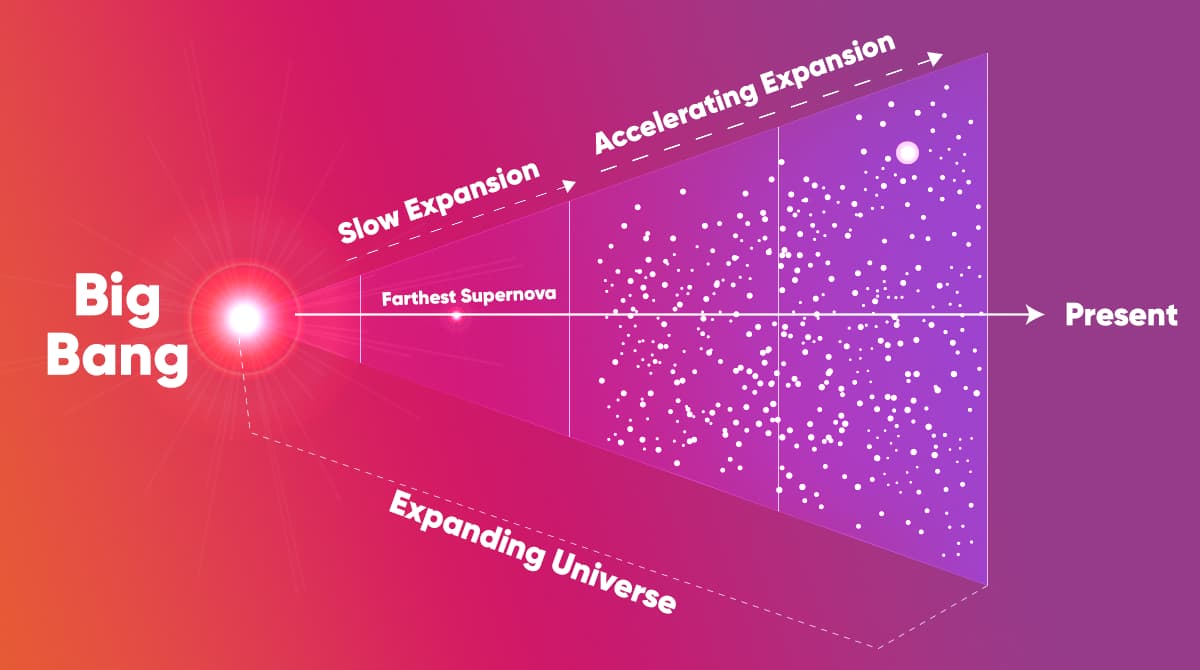
When and How Was Dark Matter/Energy Discovered?
Exploding stars called supernova, sound waves emitted by early galaxies, and the decay of the universe at different epochs played an important role in the discovery of dark matter and dark energy. Astronomers found that supernova stars were much fainter than expected and introduced the concept of dark energy.
Based on observations made in 1998 by American Adam Riess, Saul Perlmutter and Australian scientist Brian Schmidt using state-of-the-art telescopes at eight different locations around the world, the team determined that the universe was expanding. Using the distance of a Type 1 A supernova, the study showed that the universe expanded more than it should have after the Big Bang. Various study groups, despite facing skepticism within the astronomy community, conducted research that revealed an increase in the expansion rate of the universe. Dark energy has been defined by scientists as the force responsible for the accelerated expansion of the universe, exhibiting an antigravity effect.
In the 1930s, the Swiss astronomer Fritz Zwicky analyzed the behavior of objects by examining galaxies with different structures. The scientist found that galaxies were moving at higher velocities than expected, leading them to identify the presence of dark matter as the substance responsible for the accelerated motion of stars beyond predicted levels. Years after this study, astronomers Vera Rubin and Kent Ford analyzed the rotation speeds of individual galaxies. They found that the outer stars rotated faster than the stars near the center and found evidence of dark matter.
In an interview, Vera Rubin said, “Even the stars at the periphery orbit at high speeds” and “For stars to orbit that fast, there must be a lot of mass, but we can't see it. We call this invisible mass dark matter.”
Studies on Dark Energy
Einstein was the first scientist to consider the idea of dark energy, calculating that the universe will not remain constant but expand or collapse entirely. Edwin Hubble, renowned for his calculations and observations that demonstrated the constant expansion of the universe, did not assign significant importance to dark energy, a concept established through his formulas. In their groundbreaking study of fundamental particles in 1980, theoretical physicist Alan Guth and cosmologist Alexei Starobinsky proposed that a negative pressure field, akin to dark energy, triggered a rapid expansion immediately following the Big Bang. Later, while observing a Type Ia supernova in 1998, Saul Perlmutter and Brian Schmidt mentioned the concept of dark energy.
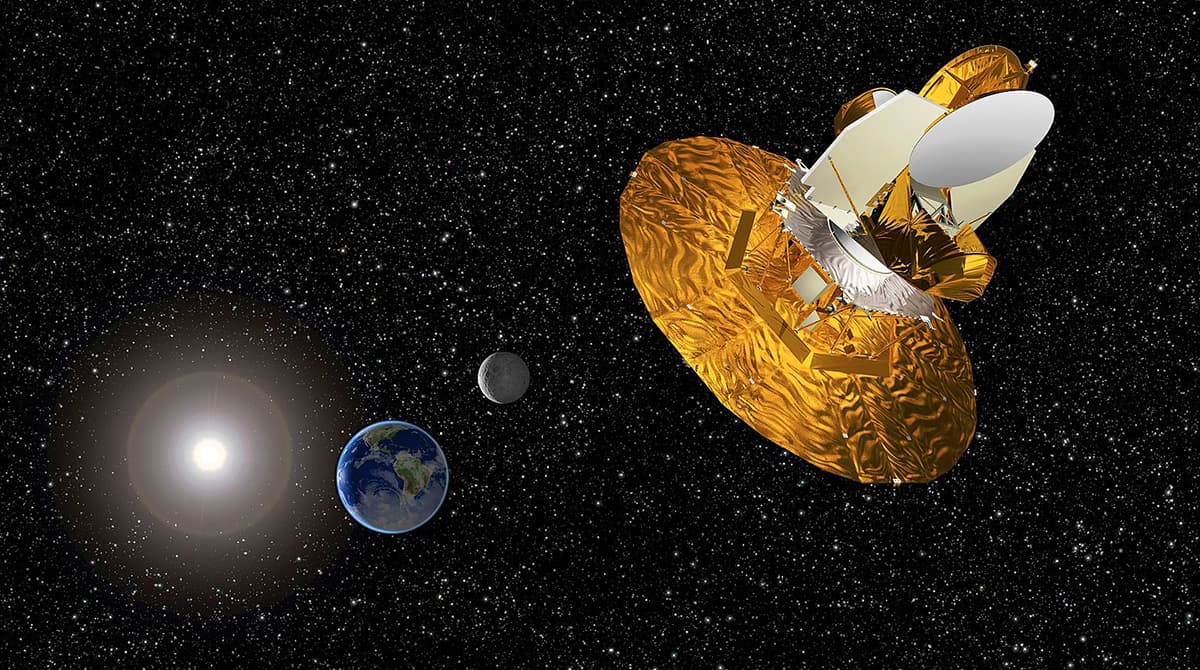 Recent data collected by NASA's WMAP (Wilkinson Microwave Anisotropy Probe) research indicates that 68% of dark energy is currently distributed throughout the universe.
Recent data collected by NASA's WMAP (Wilkinson Microwave Anisotropy Probe) research indicates that 68% of dark energy is currently distributed throughout the universe.
The precise measurements obtained through WMAP data have played a crucial role in advancing our understanding of dark energy, leading to an escalation in research efforts.
Jon Morse, director of astrophysics at the National Aeronautics and Space Administration (NASA), said, “Observations made by astronomers over the past 15 years have led to one of the most surprising discoveries in the field of physical science.
The expansion of the universe, triggered by the Big Bang, continues at an accelerating rate. Using independent methods and data from the Galaxy Evolution Explorer, we have become more certain of the existence of dark energy.”
Calculation of Dark Energy
Dark energy has similar properties to the cosmological constant. The parameter w, which is the pressure-dependent density value in the cosmological field, is given as 0 for matter and dark matter and 1/3 for energy forms. The parameter w, which is taken as a basis for dark energy, is a number very close to -1. For these reasons, dark energy is believed to be the main factor accelerating the expansion of the universe.
Calculating dark energy is much more difficult than detecting dark matter. The dark energy, which can be measured by satellite experiments or large telescopes, is conspicuous by its very large value. As a result, despite the utilization of various formulas to calculate dark energy, the investigation into its underlying driving force and whether it undergoes temporal changes remains an active area of study.
The Importance of the Dark Energy
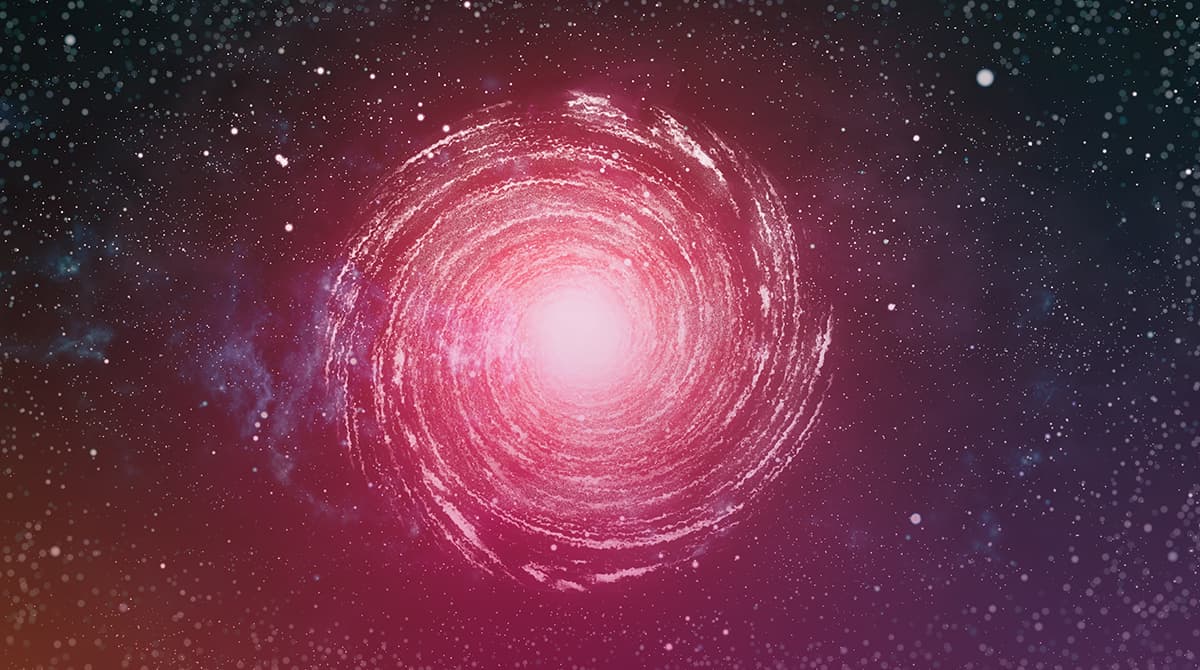 An object moving due to friction and gravity will come to a stop after a while or continue on its path at the same speed if no loss of energy occurs. In an environment where there is no gravity and no air, the moving object does not tend to stop until an obstacle appears. The fact that the universe is continuously expanding after the Big Bang has led scientists to look at dark energy.
An object moving due to friction and gravity will come to a stop after a while or continue on its path at the same speed if no loss of energy occurs. In an environment where there is no gravity and no air, the moving object does not tend to stop until an obstacle appears. The fact that the universe is continuously expanding after the Big Bang has led scientists to look at dark energy.
While dark matter pulls other matter around it inward, dark energy pushes them outward. Dark energy, which exhibits its influence on the vastest cosmic scale, occupies a larger volume of space compared to the dark matter present in the universe. Although its structure has not yet been fully elucidated, dark energy has a larger share of space than vacuum energy and dark matter.
Furthermore, the structure of dark energy, which competes with dark matter, has drawn significant attention in the universe, as it is responsible for the ongoing phenomenon of galaxies moving away from each other with each passing day. While there is no definitive consensus on whether this will ultimately yield a positive or negative outcome, the enigma surrounding dark energy, which continues to propel the universe's expansion over time, remains a profound mystery in the field of cosmology.
Is Dark Energy a Source of Energy? Could It Have a Negative Impact on Earth?
Dark energy, which is constantly expanding the universe, pushing galaxies away from each other, and acting in the opposite direction of gravity, cannot be used as a source of electricity or any other source. Furthermore, dark energy has no effect on life on Earth. We don't see objects moving away from us or our commute time getting longer by the day. In short, dark energy has no effect on gravitationally bound objects. Moreover, gravity can overcome dark energy, although only to a small extent.
Dark energy can be measured by observing cosmic objects separated by large gaps. The main reason for the increase in space between galaxies or planets is the negative effect of dark energy. In addition, dark energy has a greater effect on the most distant points. Despite the fact that dark energy, which drives the expansion of the space between galaxies, is responsible for the expansion of the universe on a cosmic scale, it has not yet been scientifically defined in clear terms.
You can discuss and share your thoughts on these intriguing concepts with us, stay updated on the latest space studies in the scientific field, and then convey this knowledge to your loved ones promptly.

 Online Services
Online Services Application Inquiry
Application Inquiry Pay Assurance Fee
Pay Assurance Fee Query Installation Number
Query Installation Number Compensation Fee Inquiry
Compensation Fee Inquiry Automatic Payment Order Inquiry
Automatic Payment Order Inquiry Partnership
Partnership



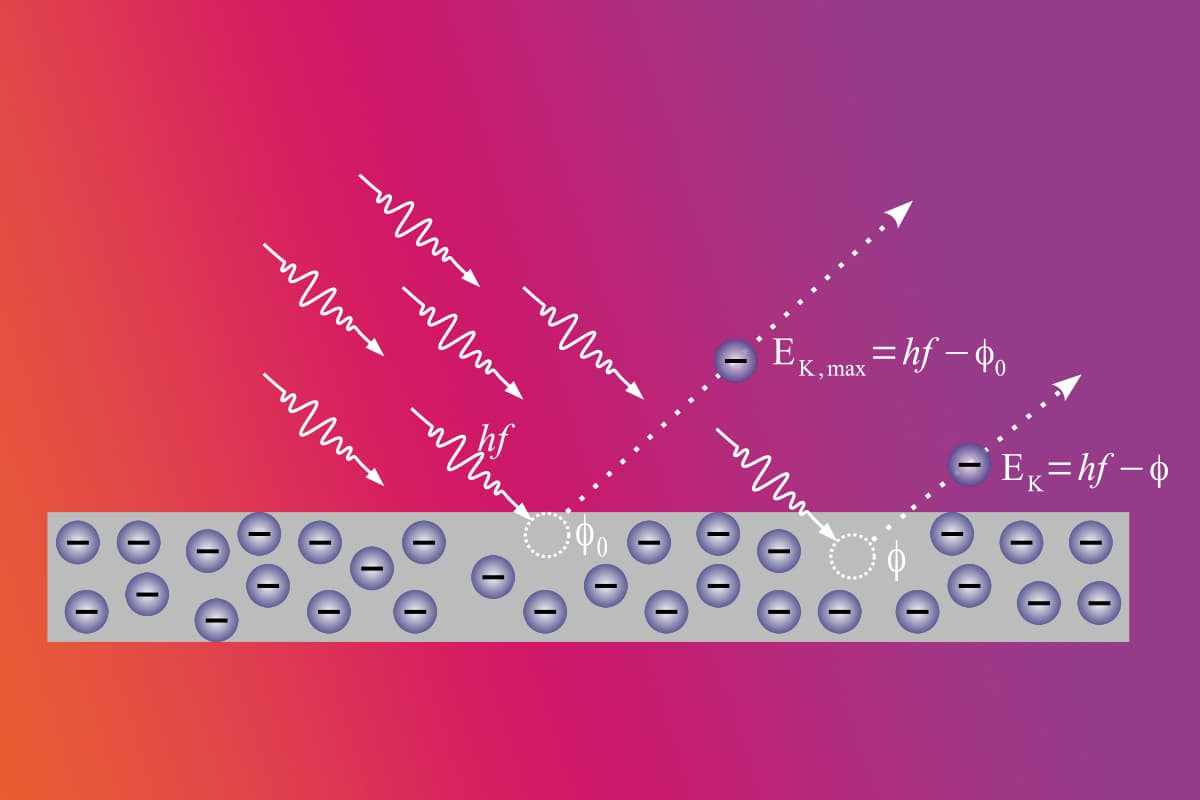

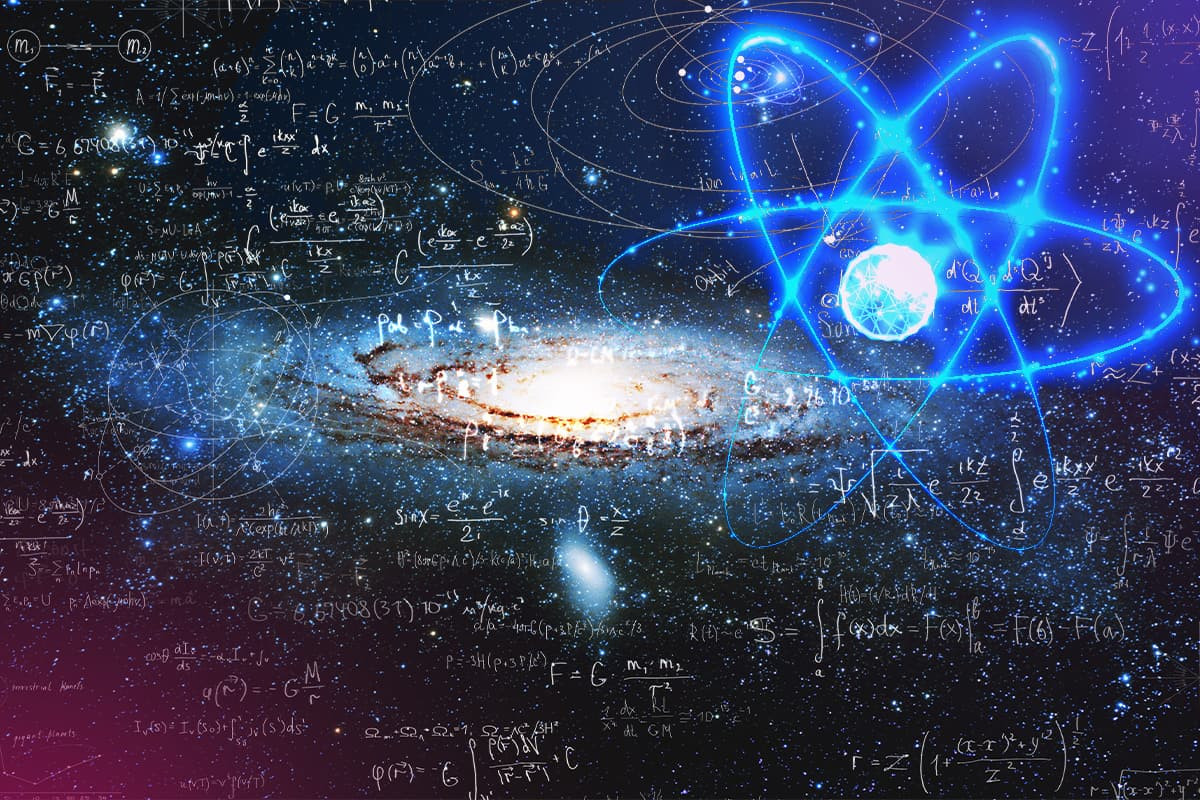
Leave a Comment